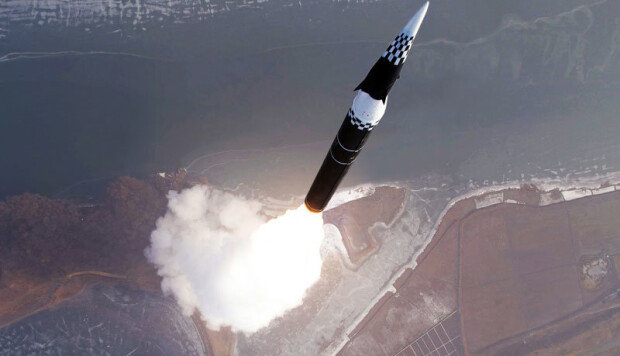Pyongyang test-fires new hypersonic IRBM with longest flight range
Pyongyang test-fires new hypersonic IRBM with longest flight range
Posted January. 08, 2025 08:15,
Updated January. 08, 2025 08:15

North Korea announced on Tuesday that it had successfully tested a new hypersonic intermediate-range ballistic missile (IRBM) the day before at a launch site in Pyongyang. The test was observed remotely via video monitoring by North Korean leader Kim Jong Un, who was accompanied by his daughter, Kim Ju Ae. Kim declared the missile capable of "penetrating any dense defensive barrier and delivering a significant military blow to adversaries," emphasizing its role in "reliably deterring any Pacific-region enemies that may threaten national security." The development is seen as nearing completion of a strategic weapon capable of reaching Guam, a U.S. base for strategic bombers in case of conflict on the Korean Peninsula.
Photos released by North Korea's state media, including the Korean Central News Agency (KCNA), suggest the missile resembles the "Hwasong-16Na" model launched in April last year. Its appearance, including a glider-type warhead, showed little change. However, North Korea claimed its flight performance was significantly enhanced. According to the announcement, the missile flew 1,500 kilometers on its predetermined trajectory, striking a simulated target zone in international waters with precision. This marks a 400-kilometer increase from the 1,000-kilometer range of last year’s "Hwasong-16Na," making it the longest flight of a hypersonic missile launched by North Korea to date.
On Monday, South Korea’s military reported that the missile flew approximately 1,100 kilometers. It is speculated that the missile, exhibiting low-altitude and irregular maneuvers, may have evaded detection by South Korea-U.S. surveillance systems as it approached its final impact site. North Korea’s reported hypersonic missile speeds—exceeding Mach 10—appear designed to both evade interception and extend range. “North Korea likely conducted tests to enhance range while flying at lower altitudes with erratic maneuverability,” a South Korean military official noted.
Experts anticipate North Korea will conduct additional tests to extend the missile’s range, potentially up to 3,000 kilometers, allowing it to strike Guam directly from Pyongyang. “There is a strong likelihood that North Korea is expediting efforts to complete a hypersonic IRBM capable of reaching Guam,” the military official said, adding that Russia’s technical assistance could play a role in these advancements.
Sang-Ho Yun ysh1005@donga.com







